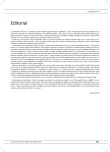Botulinum Toxin in Spasticity Management
Authors:
E. Ehler 1; I. Štětkářová 2
Authors‘ workplace:
Ne urologická klinika, Pardubická krajská nemocnice, a. s., 2Neurologické oddělení Nemocnice Na Homolce, Praha
1
Published in:
Cesk Slov Neurol N 2009; 72/105(4): 317-321
Category:
Review Article
Overview
Spasticity is characterized by a velocity- dependent incre ase in muscle tone. Spasticity can be divided into three gro ups according to the level of affecti on: generalized, multifocal, and focal. Two different types of spasticity can be discerned according to localizati on of the lesi on: 1) spasticity of cerebral origin (mostly developing after stroke); and 2) spasticity of spinal origin (typically in multiple sclerosis, spinal cord injury, degenerative disorder of the spinal canal). Physical therapy is used in all spastic pati ents. In pati ents with uncontrolled intractable spasticity, after common physical therapy it is important to discuss new possibiliti es of spasticity management. In pati ents with generalized spasticity, myorelaxati on is used in the first place. In pati ents with focal or multifocal spasticity, botulinum toxin administrati on into spastic muscle is recommended. Botulinum toxin injecti on in superfici ally located large muscles is a relatively simple technique, however, infiltrati on to deeply located muscles is recommended thro ugh EMG guidance or stimulati on of the muscle itself by hollow EMG electrode. Currently, two types of botulinum toxin and three commerci al products for spasticity tre atment are available.
Key words:
spasticity – baclofen – botulinum toxin
Sources
1. Barnes MP, Johnson GR. Upper Motor Ne urone Syndrome and Spasticity. 1st ed. Cambridge: Cambridge University Press 2001.
2. Kaňovský P, Bareš M, Dufek J. Spasticita. Mechanismy, di agnostika a léčba. Praha: Maxdorf 2004.
3. Yo ung RR. Spasticity: a revi ew. Ne urology 1994; 44 (11 Suppl 9): S12– S20.
4. Shee an G. The pathophysi ology of spasticity. Eur J Ne urol 2002; 9 (Suppl 1): 3– 9.
5. Graci es JM. Pathophysi ology of spastic paresis. I: Paresis and soft tissue changes. Muscle Nerve 2005; 31(5): 535– 551.
6. Thompson AJ, Jarrett I, Lockley I, Marsden J, Stevenson VI. Clinical management of spasticity. J Ne urol Ne urosurg Psychi atry 2005; 76(4): 459– 463.
7. Ward AB. Spasticity tre atment with botulinum toxins. J Ne ural Transm 2008; 115(4): 607– 616.
8. Plassat R, Perro uin Verbe B, Menei P, Menegalli D, Mathé JF, Richard I. Tre atment of spasticity with intrathecal Baclofen administrati on: long‑term follow‑up, revi ew of 40 pati ents. Spinal Cord 2004; 42(12): 686– 693.
9. Zahavi A, Geertzen JH, Middel B, Staal M, Ri etman JS. Long term effect (more than five ye ars) of intrathecal baclofen on impairment, disability, and qu ality of life in pati ents with severe spasticity of spinal origin. J Ne urol Ne urosurg Psychi atry 2004; 75(11): 1553– 1557.
10. Bi ering- Sørensen F, Ni elsen JB, Klinge K. Spasticity- assessment: a revi ew. Spinal Cord 2006; 44(12): 708– 722.
11. Kamen L, Henney HR 3rd, Runyan JD. A practical overvi ew of tizanidine use for spasticity secondary to multiple sclerosis, stroke, and spinal cord injury. Curr Med Res Opin 2008; 24(2): 425– 439.
12. Mo ore AP, Ade- Hall RA, Smith CT, Rosenblo om L, Walsh HP, Mohamed K et al. Two- ye ar placebo- controlled tri al of botulinum toxin A for leg spasticity in cerebral palsy. Ne urology 2008; 71(2): 122– 128.
13. Abbruzzese G. The medical management of spasticity. Eur J Ne urol 2002; 9 (Suppl 1): 30– 34.
14. Reichel G. Therapy guide spasticity – dystoni a. 1st ed. Bremen: Uni- Med- Sci ence 2005.
15. Štětkářová I, Šro ubek J, Vrba I, Peregrin J, Havrdová E. Jednorázové intratékální podání baklofenu a následné zavedení pumpového systému v léčbě těžké spasticity u osob s roztro ušeno u sklerózo u. Cesk Slov Ne urol N 2007; 70/ 103(2): 190– 195.
16. Aoki KR. Future aspects of botulinum ne urotoxins. J Ne ural Transm 2008; 115(4): 567– 573.
17. Comella CL, Pullman SL. Botulinum toxins in ne urological dise ase. Muscle Nerve 2004; 29(5): 628– 644.
18. Dressler D, Benecke R. Xe omin: perspectives of a novel therape utic botulinum toxin preparati ons. Akt Ne urol 2006; 33(4): 138– 141.
19. Brashe ar A, Gordon MF, Elovic E, Kassici eh VD, Marcini ak C, Do M et al. Intramuscular injecti on of botulinum toxin for the tre atment of wrist and finger spasticity after a stroke. N Eng J Med 2002; 347(6): 395– 400.
20. Slawek J, Bogucki A, Reclawowicz D. Botulinum toxin type A for upper limb spasticity following stroke: an open- label study with individu alised, flexible injecti on regimens. Ne urol Sci 2005; 26(1): 32– 39.
21. Bareš M, Kaňovský P. Praktické po užití botulotoxinu A v léčbě spasticity dospělé populace. Cesk Slov Ne urol N 2002; 65/ 98(6): 421– 425.
22. Minks E, Bareš M, Husárová I, Ferencová K. Dlo u-hodobá léčba spasticity dolních a horních končetin botulotoxinem A u dětí s dětsko u mozkovo u obrno u: retrospektivní studi e. Ne urol pro praxi 2008; 9 (Suppl C): 3– 22.
Labels
Paediatric neurology Neurosurgery NeurologyArticle was published in
Czech and Slovak Neurology and Neurosurgery

2009 Issue 4
- Metamizole vs. Tramadol in Postoperative Analgesia
- Memantine in Dementia Therapy – Current Findings and Possible Future Applications
- Memantine Eases Daily Life for Patients and Caregivers
- Metamizole at a Glance and in Practice – Effective Non-Opioid Analgesic for All Ages
- Advances in the Treatment of Myasthenia Gravis on the Horizon
Most read in this issue
- Tumo urs of the Third Cerebral Ventricle
- Acquired Neuromyotonia with Minor Central Symptoms and Antibodies against Voltage- Gated Potassium Channels – a Case Report
- Botulinum Toxin in Spasticity Management
- Paroxysmal Kinesigenic Dyskinesi a – a Case Report of a Yo ung Woman with Alternating Hemidystoni a
